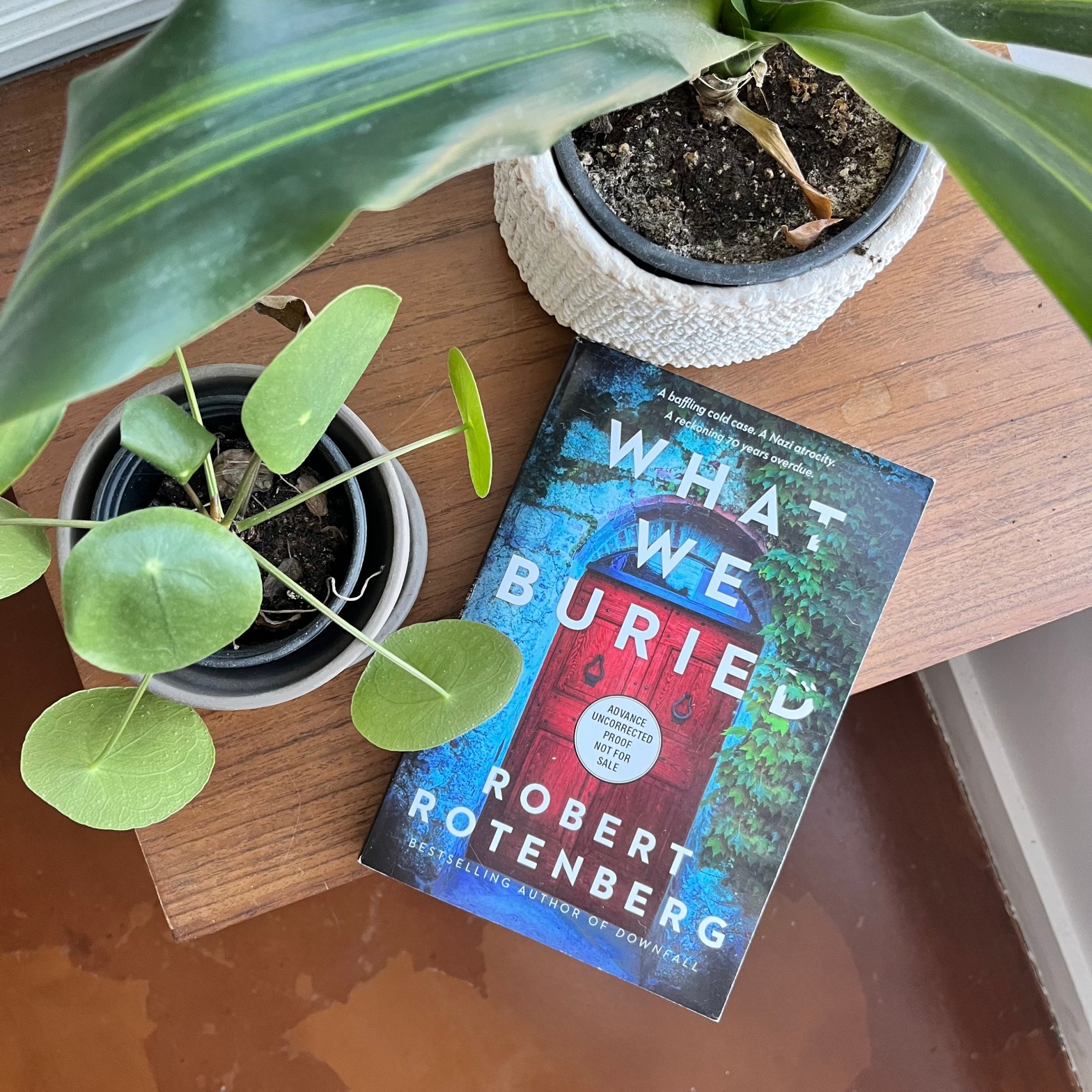by Robert Rotenberg
Happy Pub Day to What We Buried!
Daniel Kennicott’s life was flipped upside down after his parents’ death and, years later, the murder of his brother. The investigations into both yielded no results but when his boss, Ari Greene, discovers a new lead, they secretly reopen the case which takes Kennicott on a trip to Italy to explore more of his family’s history as they think it is all undoubtedly connected.
The inspiration for this novel centres around a real story from WWII that I hadn’t heard of before. In Gubbio, Italy 40 innocent Italians were rounded up and killed by retreating Germans in 1944. This was supposedly in retaliation after an Italian resistance fighter killed one German soldier and injured another at a cafe. “La Quaranta” as it is referred to in the novel, is understandably the kind of event that shakes and never really leaves a place or its people.
Kennicott’s effort to learn more about his family’s past and involvement in this horrific event was, of course, difficult but his time spent in Italy wasn’t entirely unpredictable which then set the table for the rest of the novel. Unfortunately, I did find this one to be a bit obvious (although, I did learn a few new things: in addition to Gubbio’s history there was also a heartbreaking but fascinating anecdote about the origins of the Live Long and Prosper sign). It seemed as though seemingly plain evidence or clues were missed in the initial investigations when they hadn’t ruled out foul play. I was able to guess how Kennicott’s family history was linked to their deaths however the ending is left fairly open-ended which makes me wonder if Rotenberg is pondering a sequel.
This is a multi-POV novel where we hear from Kennicott, Greene, Greene’s daughter, Alison, and two supporting detectives, Darvesh and Sheppard. While Darvesh and Sheppard are mentioned from the beginning, we only start to hear their first-person narration halfway through the novel which upsets the balance a bit. Similarly, there were details that felt like a big deal but were glossed over and characters that felt somewhat superfluous. I think this would actually make a great TV series because, in some ways, it was written like one.
What I enjoyed best about this novel was that it was set (when not in Gubbio) in Toronto. I love it when I can recognize a neighbourhood or community and the ones mentioned here aren’t too far from where I live! It’s always exciting to hear stories that could be taking place around you at any time. (Although, I suppose there is quite the legal system scandal that is trying to be uncovered so that’s obviously less great.)
The emotional tones of this story were effective and Rothenberg does shed light on an important and little-known aspect of a grim time. It is well-researched (as he admits upfront is unlike his other novels) and you can tell that this atrocity really means a lot to him. I think in a TV medium this would be impressive and we could dig into more of the supplementary characters or quickly mentioned details but as a read, it left a little something to be desired.
“These stones will outlast us all, forever bearing witness to the fine line between justice and revenge.”
What We Buried, p. 1
